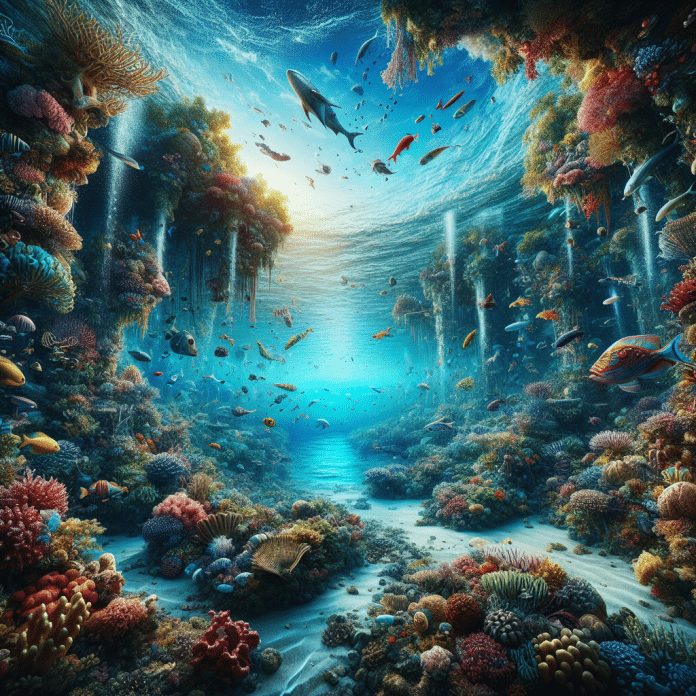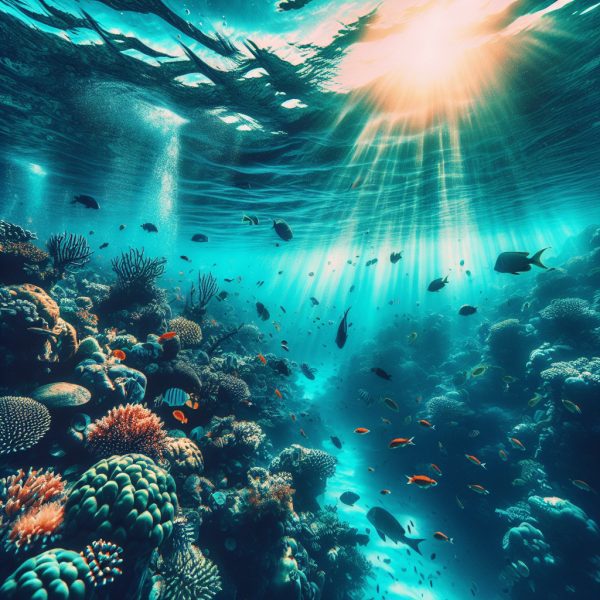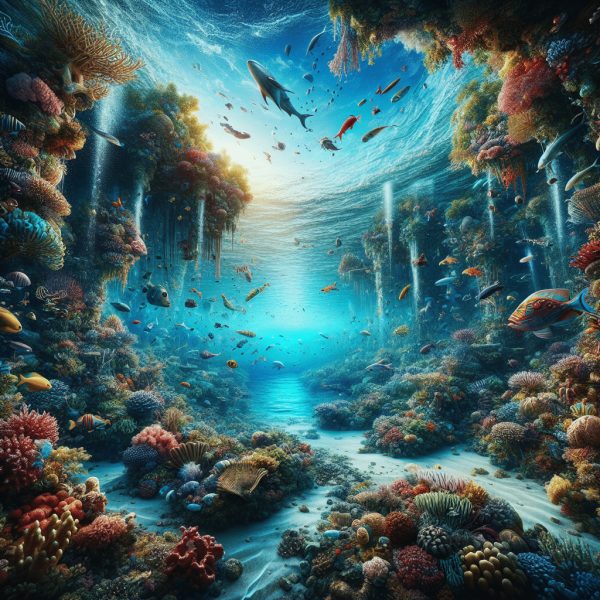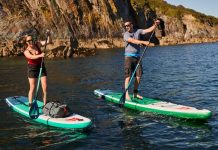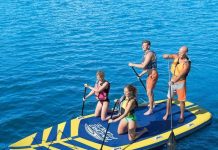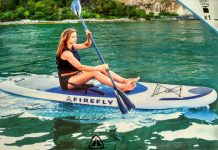Ah, the mesmerizing allure of the underwater world! In our latest article, we dive into the intriguing realm of snorkeling, a breathtaking activity that allows us to immerse ourselves in the hidden treasures beneath the sea’s surface. Get ready to embark on an unforgettable journey as we explore the wonders of snorkeling and discover the countless marvels that await us beneath the tranquil waves. So, strap on your mask, grab your fins, and let the adventure begin!
What is Snorkeling?
Definition
Snorkeling is a recreational water activity that allows individuals to explore the mesmerizing underwater world. It involves swimming near the surface of the water with the use of snorkeling gear, which includes a mask, snorkel, and fins. This exhilarating activity offers an extraordinary opportunity to observe and interact with marine life, from colorful fish and coral reefs to majestic sea turtles and fascinating creatures of the deep.
Origin
The origins of snorkeling can be traced back to ancient times, with evidence of people using hollow reeds or animal horns to breathe while swimming underwater. However, the modern concept of snorkeling as a leisure activity gained popularity in the mid-20th century. It was initially embraced by divers as a way to explore shallow waters without the need for heavy scuba equipment. Over the years, snorkeling has evolved into a widely accessible and beloved water sport enjoyed by people of all ages and skill levels.
Types of Snorkeling Equipment
Snorkeling gear consists of several essential pieces that enhance the overall experience and ensure the safety of snorkelers.
Mask
The mask is a crucial component of snorkeling equipment as it allows snorkelers to see clearly underwater. It covers the eyes and nose, creating a watertight seal. A good quality mask should fit comfortably on the face without causing any pressure points. It should also have a tempered glass lens that is resistant to fogging and scratches, offering a clear and unobstructed view of the underwater world.
Snorkel
The snorkel, a curved tube with a mouthpiece, allows snorkelers to breathe while floating face down in the water. It extends above the water surface, allowing continuous airflow to the mouth without the need to lift the head. A good snorkel should have a comfortable mouthpiece, a purge valve to clear any water that enters the tube, and a snorkel keeper to securely attach it to the mask strap.
Fins
Fins, also known as flippers, are worn on the feet and serve multiple purposes while snorkeling. They provide propulsion, allowing snorkelers to swim more efficiently and cover greater distances. Fins also help with stability in the water and aid in maintaining balance. It is important to choose fins that fit snugly but not too tight, ensuring a comfortable and secure fit.
Optional Accessories
In addition to the essential snorkeling gear, there are optional accessories that can enhance the experience even further. These include neoprene socks or booties for added comfort and protection, a snorkeling vest for buoyancy control, and a waterproof underwater camera or GoPro to capture unforgettable moments beneath the surface.
The Benefits of Snorkeling
Physical Fitness
Snorkeling offers a range of physical fitness benefits, making it an ideal activity for those looking to combine leisure with exercise. It provides a full-body workout, engaging multiple muscle groups such as the arms, legs, core, and back. The resistance of the water challenges these muscles, helping to improve strength and endurance. Additionally, snorkeling is a low-impact activity that puts minimal stress on joints, making it suitable for individuals of all fitness levels.
Mental Well-being
Immersing oneself in the underwater world through snorkeling can have a positive impact on mental well-being. The tranquility and serenity of the ocean can help reduce stress, anxiety, and even symptoms of depression. The rhythmic breathing while snorkeling can induce a meditative state, promoting relaxation and mindfulness. The vibrant colors and breathtaking sights encountered underwater can also evoke a sense of wonder and awe, boosting mood and overall happiness.
Environmental Awareness
One of the often-overlooked benefits of snorkeling is the opportunity it provides to develop a deeper appreciation and understanding of the marine environment. Through firsthand encounters with marine life and coral reefs, snorkelers become more aware of the delicate balance and the fragility of these ecosystems. This increased environmental awareness can lead to a greater commitment to conservation efforts and a desire to protect and preserve our oceans for future generations.
Choosing the Right Snorkeling Gear
Mask
Selecting the right mask is essential for a comfortable and enjoyable snorkeling experience. When trying on a mask, it is important to check for a proper fit, ensuring that it seals well against the face without excessive pressure. The mask skirt, made of soft silicone, should create a watertight seal. Tempered glass lenses are preferable as they are more resistant to fogging and offer better clarity underwater. It is also worth considering masks with a wide field of vision to maximize the visual experience.
Snorkel
Finding the perfect snorkel is crucial for easy and efficient breathing while snorkeling. A comfortable mouthpiece made of hypoallergenic silicone is essential to avoid jaw fatigue. Look for a snorkel with a purge valve, which allows for easy clearing of any water that enters the tube while snorkeling. It should also have a secure snorkel keeper to attach it to the mask strap, ensuring it stays in place during your underwater adventures.
Fins
Choosing the right pair of fins is important for propulsion and maneuverability while snorkeling. Fins come in various styles and sizes, and the right fit will depend on personal preference and foot size. It is recommended to try on different fins to find a comfortable fit without any excessive tightness or discomfort. Look for fins with sturdy yet flexible blades that provide both power and efficient movement in the water. Adjustable straps or quick-release buckles can also be beneficial for easy donning and doffing.
Optional Accessories
In addition to the essential gear, there are optional accessories that can enhance the comfort and convenience of snorkeling. Neoprene socks or booties can provide extra insulation and protection for the feet, especially in colder waters. Snorkeling vests offer buoyancy control, allowing snorkelers to effortlessly float on the surface or dive down as desired. Underwater cameras or GoPros are an excellent add-on for those who wish to capture their underwater adventures and create lasting memories.
Preparing for Snorkeling
Selecting a Destination
Choosing the right destination is an important part of preparing for a snorkeling adventure. Consider factors such as visibility, water temperature, and the presence of diverse marine life. Researching popular snorkeling destinations or seeking recommendations from experienced snorkelers can help narrow down the options and ensure an unforgettable underwater experience.
Checking Weather Conditions
Before heading out for a snorkeling excursion, it is vital to check the weather conditions. Inclement weather, high winds, or rough seas can affect the safety and visibility of the water. It is advisable to consult local weather forecasts or contact local authorities or tour operators to determine if it is safe to snorkel. Being aware of weather conditions in advance can help avoid disappointment and ensure a safe and enjoyable outing.
Physical Preparation
Snorkeling can be physically demanding, especially for individuals who are not accustomed to swimming or spending extended periods in the water. Engaging in regular physical exercise, such as swimming or cardiovascular workouts, can help improve endurance and fitness level. It is also essential to maintain hydration and ensure proper nutrition before a snorkeling adventure to optimize energy levels. Preparing the body by stretching and warming up prior to snorkeling can help prevent muscle strains and ensure a comfortable and enjoyable experience.
Safety Tips for Snorkeling
Buddy System
Snorkeling is always best enjoyed with a buddy or in a group. The buddy system provides an added layer of safety and ensures that someone is there to assist in case of any emergencies. Snorkeling with a partner also allows for shared experiences and creates opportunities to spot and discuss marine life sightings.
Understanding Your Limits
It is crucial to have a clear understanding of your swimming abilities and comfort level in the water. Snorkeling in more challenging conditions, such as strong currents or deep waters, should be attempted only by experienced and confident swimmers. Beginners and those who are not strong swimmers should stick to calm and shallow areas where they can easily touch the ocean floor if needed.
Be Aware of Marine Life
While snorkeling, it is important to be aware of and respectful towards marine life. Avoid touching, chasing, or disturbing any marine creatures, as this can harm them and their habitat. Maintain a respectful distance from any wildlife encountered, and observe their natural behavior without causing any interference. Remember, we are visitors in their world, and it is our responsibility to protect and preserve their environment.
Be Respectful of the Environment
Snorkelers should strive to leave no trace and avoid causing any damage to the underwater environment. Avoid stepping on or touching coral reefs, as they are delicate and can be easily damaged. Ensure that any garbage or waste is properly disposed of in designated bins upon returning to land. By being mindful of our impact on the environment, we can contribute to the preservation of these fragile ecosystems.
Sun Protection
Sun protection is crucial while snorkeling, as the sun’s rays can be intensified by the water’s reflection. Apply a reef-safe sunscreen before entering the water to protect the skin from sunburn and reduce the risk of coral bleaching. Wearing a rash guard or a wetsuit can also provide additional protection from the sun’s harmful UV rays. Don’t forget to protect the head, neck, and face by wearing a wide-brimmed hat and sunglasses.
Basic Snorkeling Techniques
Breathing through the Snorkel
Breathing through the snorkel is one of the fundamental skills to master while snorkeling. To breathe properly, position the snorkel in your mouth and create a seal with your lips. Breathe in slowly and deeply through the snorkel, being mindful to only use your mouth and not your nose. Exhale gently, allowing the air to escape through the snorkel’s purge valve or the top of the tube.
Clearing the Snorkel
At times, water may enter the snorkel, interrupting breathing. To clear the snorkel, exhale forcefully and sharply through the snorkel, using a quick burst of air. This will push the water out through the purge valve or the top of the snorkel, allowing for unobstructed breathing.
Equalizing Ear Pressure
Equalizing ear pressure is important when descending underwater, especially in deeper snorkeling locations. To equalize, gently pinch your nose shut with your fingers and blow softly, as if trying to gently blow your nose. This helps to equalize the pressure in your ears and prevents discomfort or potential ear injuries.
Proper Use of Fins
Using fins efficiently can enhance propulsion and maneuverability while snorkeling. Begin by floating on the surface, keeping the legs relaxed and extended behind you. Use a gentle kick with your legs, focusing on bending your knees slightly to utilize the full power of the fin. Practice maintaining a steady rhythm with your kicks, aiming for fluid and efficient movements through the water.
Exploring Marine Life while Snorkeling
Identifying Fish and Coral
One of the captivating aspects of snorkeling is the opportunity to observe and identify various species of fish and coral. Learning to identify different fish species can add an extra layer of excitement and appreciation to the underwater experience. Take note of distinct features, patterns, and colors of fish encountered, and refer to fish identification guides or seek guidance from experienced snorkelers or local experts to enhance your knowledge.
Interacting with Marine Species
While snorkeling, it is important to interact with marine life responsibly and ethically. Avoid touching or disturbing the wildlife, as this can disrupt their natural behavior and potentially cause harm. Maintain a respectful distance and observe from a distance, respecting the boundaries of their natural habitat. Remember, the welfare and well-being of marine species should always come first.
Protecting the Ecosystem
As snorkelers, we have a responsibility to protect and preserve the fragile ecosystems we encounter. Be mindful of your movements to avoid accidentally damaging coral or disturbing the seafloor. Avoid using any sunscreen or lotions that contain harmful chemicals that can harm coral reefs. Participate in beach and underwater clean-up initiatives to help keep the ocean and its inhabitants safe and healthy.
Snorkeling Etiquette
Respecting Fellow Snorkelers
When snorkeling in popular or crowded areas, it is essential to respect fellow snorkelers and their space. Avoid crowding or blocking the path of others, allowing everyone to enjoy their snorkeling experience uninterrupted. Maintain a safe distance to reduce the risk of accidental contact or collisions. By being considerate and mindful of others, we can ensure a harmonious and enjoyable snorkeling experience for everyone.
Leaving No Trace
As responsible snorkelers, we should strive to leave no trace behind after our underwater adventures. Avoid dropping or leaving any trash or waste in the water or on the beach. Dispose of any garbage in designated bins or bring it back to shore for proper disposal. By leaving the environment as we found it or even better, we can minimize our impact and help preserve the natural beauty of snorkeling destinations.
Avoiding Damage to Coral Reefs
Coral reefs are delicate and vulnerable ecosystems that require utmost care and protection. Avoid touching or stepping on coral reefs, as even the slightest impact can cause irreversible damage. Snorkelers should float or swim above the reef without making any physical contact. By being aware of our movements and maintaining a respectful distance, we can prevent accidental damage and contribute to the preservation of these precious underwater ecosystems.
Being Mindful of Marine Life
When snorkeling, it is important to be mindful of the welfare and well-being of marine life. Avoid chasing or attempting to touch any marine creatures, as this can disturb their natural behavior and potentially cause harm. Refrain from feeding fish or any other marine species, as it can disrupt their natural feeding patterns. By observing from a distance and respecting the marine life’s habitat, we can enjoy their beauty while ensuring their safety and protection.
Popular Snorkeling Destinations
Great Barrier Reef, Australia
The Great Barrier Reef in Australia is undoubtedly one of the world’s most iconic and breathtaking snorkeling destinations. Stretching over 2,300 kilometers along the Queensland coast, this UNESCO World Heritage site is home to an incredible array of marine life, vibrant coral reefs, and crystal-clear waters. Snorkelers can explore the diverse ecosystems and encounter species such as clownfish, turtles, and majestic manta rays.
Maldives
The Maldives is renowned for its pristine white-sand beaches, turquoise waters, and abundant marine life. With its numerous coral reefs and atolls, it offers a snorkeling paradise for enthusiasts of all levels. The Maldives boasts incredible visibility, allowing snorkelers to witness an underwater spectacle of colorful coral gardens, reef sharks, sea turtles, and a stunning variety of tropical fish.
Hawaii, USA
The Hawaiian Islands offer an abundance of picturesque snorkeling spots. From the crystal-clear waters of Hanauma Bay on Oahu to the vibrant coral reefs of Molokini Crater near Maui, snorkelers can immerse themselves in an underwater wonderland. Swim alongside graceful green sea turtles, encounter playful spinner dolphins, and witness a kaleidoscope of colorful fish species.
Galapagos Islands, Ecuador
The Galapagos Islands, located off the coast of Ecuador, offer a unique snorkeling experience unlike any other. Here, snorkelers have the opportunity to swim with curious sea lions, encounter marine iguanas basking in the sun, and marvel at the diverse species found only in this remote archipelago. Snorkeling in the Galapagos allows for a rare and intimate connection with nature in a truly extraordinary setting.
Bali, Indonesia
With its warm waters, vibrant coral reefs, and rich marine biodiversity, Bali is a sought-after destination for snorkelers. The island’s numerous snorkeling sites offer an array of underwater wonders, including vibrant coral gardens, schools of tropical fish, and the chance to spot larger marine species such as manta rays and even gentle whale sharks. Bali’s snorkeling spots cater to varying skill levels, making it an ideal destination for both beginners and experienced snorkelers.
Advanced Snorkeling Techniques
Free Diving
For those seeking an extra level of adventure, free diving combines snorkeling with the art of breath-holding and diving to greater depths. This advanced technique requires proper training and breath control to safely explore deeper waters and encounter marine life beyond the reach of traditional snorkeling. Free diving allows for a more immersive experience, enabling snorkelers to dive down and observe marine life in their natural habitat.
Underwater Photography and Videography
Using underwater cameras or GoPros can elevate the snorkeling experience by capturing incredible moments beneath the surface. Snorkelers interested in photography and videography can document their encounters with marine life, the vibrant colors of coral reefs, and the awe-inspiring beauty of the underwater world. This allows them to create lasting memories and share their experiences with others.
Night Snorkeling
Night snorkeling offers an entirely different perspective on the underwater world. Equipped with underwater flashlights, snorkelers can witness nocturnal marine species coming to life, including bioluminescent organisms emitting a mesmerizing glow. It is an opportunity to observe unique behaviors and interactions that are hidden during daylight hours, providing an unforgettable and thrilling nocturnal snorkeling experience.
Snorkeling with Manta Rays
Encountering manta rays in their natural habitat is a bucket-list experience for many snorkelers. Various destinations around the world, such as the Maldives, Bali, and Hawaii, offer the chance to snorkel alongside these majestic creatures. These gentle giants glide through the water with elegance, creating a magical and awe-inspiring spectacle for snorkelers fortunate enough to witness their graceful movements.
Snorkeling in Strong Currents
For experienced snorkelers looking for a thrilling challenge, snorkeling in strong currents can provide an adrenaline rush. Destinations such as Komodo National Park in Indonesia offer the opportunity to snorkel in powerful currents, where snorkelers can drift along while observing diverse marine life without exerting much effort. It is important to have adequate experience and follow all safety precautions when snorkeling in strong currents to ensure a safe and thrilling experience.

